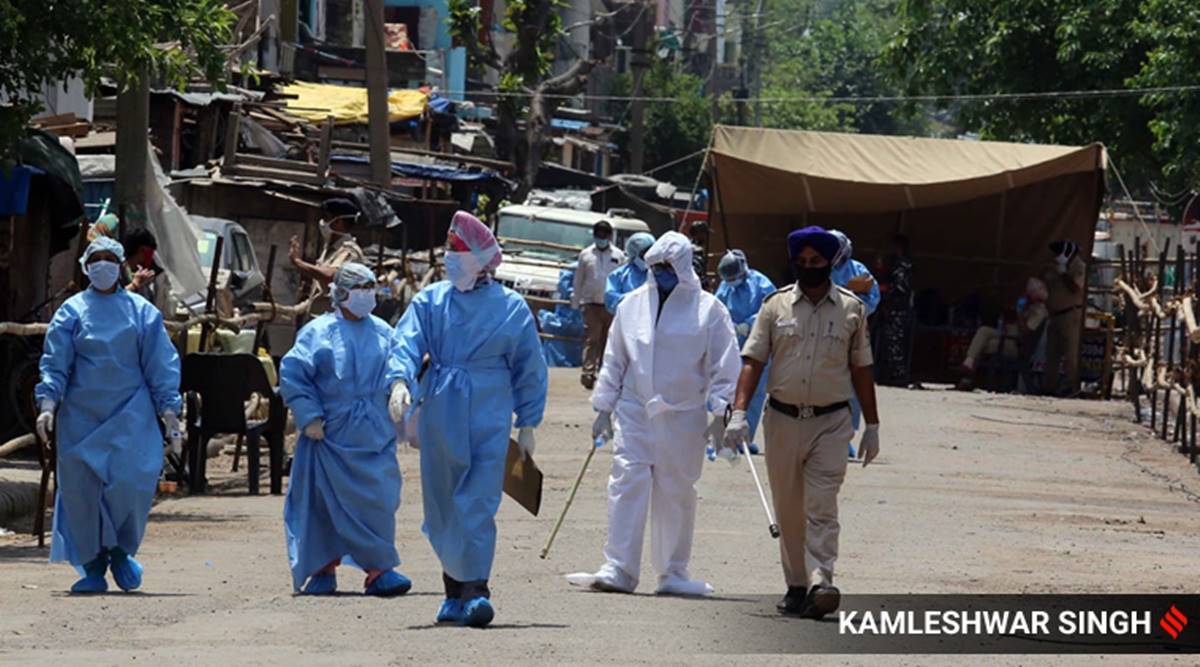 In Chandigarh, the patients are 8,511 while the oxygen quota allocated is 40 MT. Haryana has 1,16,867 Covid patient, while the quota of oxygen is 267 MT and then in Punjab the patients are 74,343 while the oxygen quota is 227 MT. (Express Photo by Kamleshwar Singh)
In Chandigarh, the patients are 8,511 while the oxygen quota allocated is 40 MT. Haryana has 1,16,867 Covid patient, while the quota of oxygen is 267 MT and then in Punjab the patients are 74,343 while the oxygen quota is 227 MT. (Express Photo by Kamleshwar Singh) As the Punjab and Haryana High Court hears a petition on Covid-19 surge in Punjab, Haryana and Chandigarh, the Amicus Curiae in the case, Senior Advocate Rupinder Khosla, tells Jagpreet Singh Sandhu that the second wave caught the two states and UT unprepared to tackle the challenge at hand.
You have pointed out during HC proceedings the mismatch in oxygen supply to states and Delhi.
Government data reveals that in the north, state of Uttrakhand has 74,114 Covid-19 active patients while the oxygen allocated is 103 MT.
Himachal Pradesh has 32,469 patients and the allocated quota for oxygen in 15 MT. In Chandigarh, the patients are 8,511 while the oxygen quota allocated is 40 MT. Haryana has 1,16,867 Covid patient, while the quota of oxygen is 267 MT and then in Punjab the patients are 74,343 while the oxygen quota is 227 MT.
Thus the entire northern India has 3,06,304 patients but the total quota of oxygen for these five states is 652 MT, on the other side, at Delhi there are 86,232 patients and the quota of oxygen is 700 MT. So, I have pointed out where is the justice to these five states or the whole of northern India, against Delhi which is given a special treatment in allocation of oxygen quota.
This shows that there is black marketing going on in Delhi and the Delhi government is not able to manage and monitor the oxygen quota. It could also be the VIPs are managing the oxygen in Delhi.
Who do you think has been responsible for the collapsing of health system in Punjab, Haryana and UT?
I think that the governments were not prepared for the second wave of Covid-19 and the system has thus collapsed. After the first wave was over, and the celebrations begun, but now the second wave has hit harder. There is a shortage of ventilators, and beds and other infrastructure which is required for fighting with Covid. The other thing is that we do not have trained staff for dealing with the ventilators, which is required. So at some places there is staff but there are no ventilators, and where there are ventilators there is no trained staff, so it’s a complete mismanagement by the states. Also then the quantum of oxygen, when there is not sufficient oxygen, the staff then can also not do anything.
Since you have been conducting research at your level to assist the High Court, how do you think the situation in Punjab, Haryana and Chandigarh has improved?
The governments have to work it out at local level now. The final year MBBS students, the anganwadi workers, the panchayat staff, have to be involved for going to each and every village and the hospital have to be earmarked and dedicated staff and hospitals for a particular areas. In Mumbai, small areas have been earmarked, which is involving tehsil and sub-tehsils and there are teams for specific areas. Our states can copy the same model and use it to fight with Covid-19.
What do you think is the most important tool to defeat the virus?
Vaccine is the most important tool at present, and everyone must get vaccinated. The vaccine can only help in restricting the surge deaths due to Covid. After 15 days of the first vaccine jab, there are some amount of anti-bodies, so that is the only possible way to get rid of virus.
As you have been evaluating the situation closely, what worries you the most?
Since the Supreme Court has now constituted a committee, to determine the quantum of oxygen and to give the report in seven days, and the case is now fixed for May 17 at the apex court. So I am worried for the next 7 days, what will happen as there could be a surge in number of deaths due to lack of supply of oxygen in different states, and the demand of oxygen consumption is increasing every day in almost every affected state. Though at India we are producing oxygen in excess, but the problem is with the lifting of oxygen by the states, thus the major issue is of transportation and logistics.
I am hopeful that the apex court will be apprised of the situation.
- The Indian Express website has been rated GREEN for its credibility and trustworthiness by Newsguard, a global service that rates news sources for their journalistic standards.

